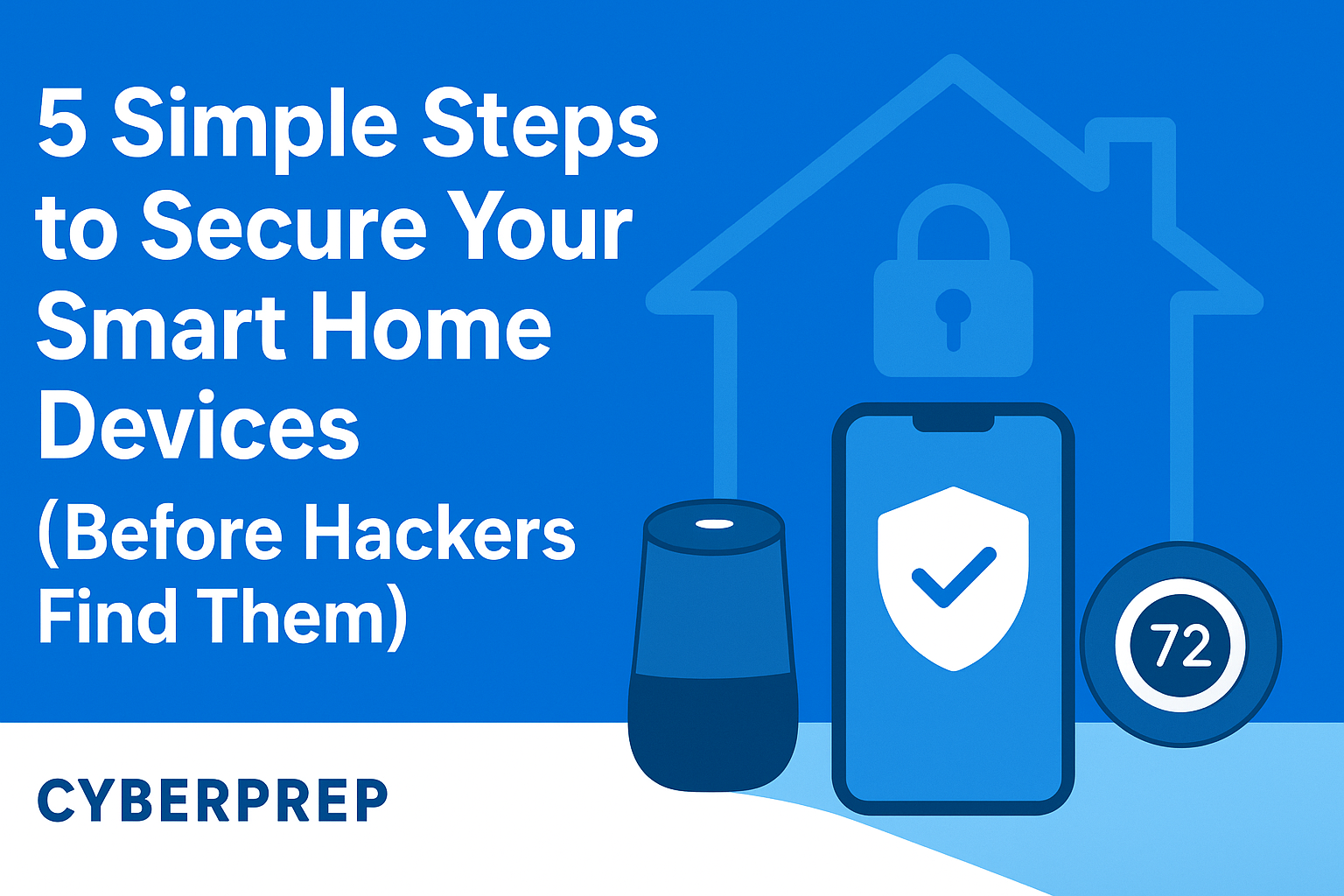Welcome to Ask Cyberprep, our weekly series where we answer your most pressing cybersecurity questions. Today, we’re bringing security home and tackling a question that affects millions of us: “My house is full of smart devices. How do I make sure they’re secure?”
Smart speakers, cameras, thermostats, and even coffee makers have made our lives more convenient. But every device connected to the internet is a potential door into our digital lives. Securing them isn’t just a good idea; it’s a critical part of a modern, holistic approach to security.
The Hidden Risks of a Connected Home
The convenience of the Internet of Things (IoT) comes with unique security challenges that many people overlook:
- Default Passwords: Many devices ship with simple, default passwords (like “admin”) that users never change, making them incredibly easy for attackers to guess.
- Lack of Updates: Unlike our phones and computers, smart devices often don’t have a clear or automatic process for security updates, leaving them vulnerable to known exploits.
- Data Collection: These devices often collect a vast amount of data about our habits, from when we are home to what we say. A breach could expose this highly personal information.
- A Gateway to Your Network: A compromised smart device can be a weak link, giving an attacker an entry point to your entire home Wi-Fi network. For anyone working from home, this can directly expose professional data and devices to risk.
Your 5-Step Smart Home Security Checklist
Securing your smart home doesn’t require a degree in computer science. It’s about building simple, consistent habits. Here are five practical steps you can take right now:
- Change Every Default Password: This is the single most important step. When you set up a new device, your first action should be to change the default administrator username and password to something strong and unique.
- Create a Guest Network: Most modern Wi-Fi routers allow you to create a separate “guest” network. Place all of your smart home devices on this network. This isolates them from your primary devices (like your laptop and phone), so if an IoT device is compromised, the attacker can’t easily access your sensitive data.
- Keep Firmware Updated: Regularly check for firmware updates for your devices. Go to the manufacturer’s app or website to see if new security patches are available and install them immediately. Enable automatic updates whenever possible.
- Enable Two-Factor Authentication (2FA/MFA): For any device or app that offers it, enable two-factor authentication. This provides a crucial second layer of security beyond just a password.
- Review Privacy Settings: Take a few minutes to go through the privacy settings on your device’s app. Disable any data collection features you’re not comfortable with and turn off features like remote access if you don’t need them.
From a Smart Home to a Secure Mindset
The principles of securing your smart home are the same principles that create a strong security culture in the workplace. It’s about moving from a default state of trust to a proactive state of awareness and verification.
This is the core of the Cyberprep.ai mission. We believe that building these security habits in all aspects of your life is the key to true preparedness. Our training helps instill this mindset, teaching the critical thinking and best practices that protect you both at home and in the office. The skills you use to secure your smart camera are the same skills that can prevent a multi-million dollar corporate data breach.
Don’t let the convenience of technology become your biggest vulnerability.
Visit cyberprep.ai to learn how our training can help you build a comprehensive security mindset for every part of your digital life.

